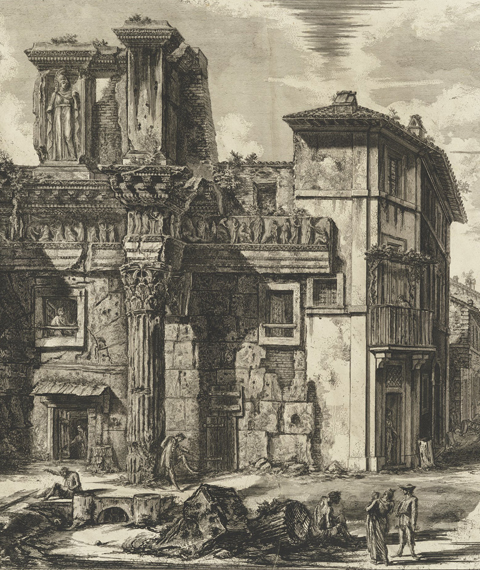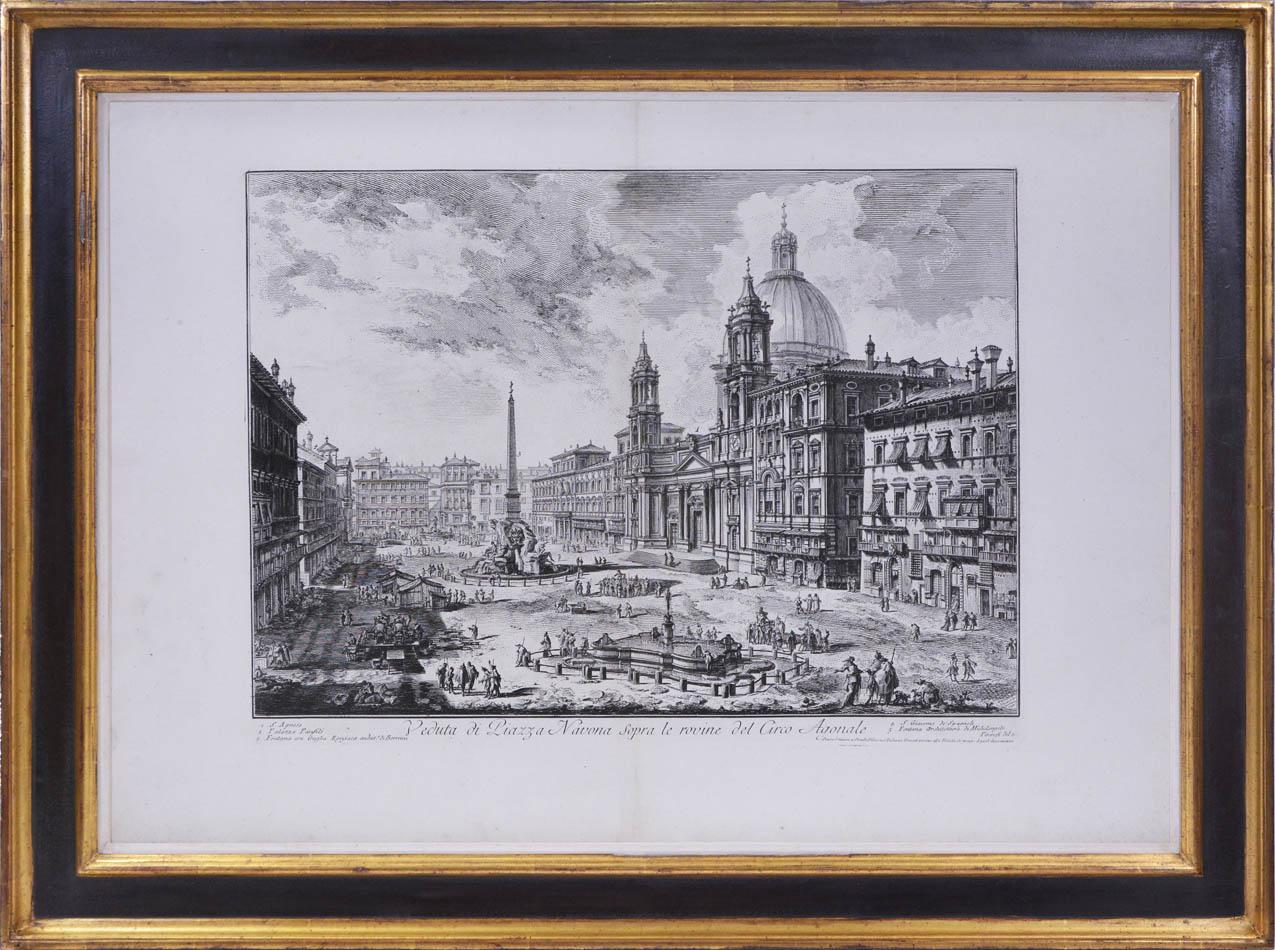
It was his only realized building, and completed at the height of his career. Yet the building sits squarely, if uneasily so, at the center of Piranesi's oeuvre. Une sensation analogue de rapetissement affecte le visiteur de Sainte-Marie-Aventine." (Pressouyre, 1978:425) A 1787 critic wrote that it was "not worthy of mention." (Wilton-Ely, 1993:27) Piranesi's first biographer described it as "overloaded with ornaments which, even though taken from antiquity, were not in harmony with one another." He continued, "The church at the Priorato will certainly please many, as it must above all have pleased Piranesi, who always regarded it as a masterpiece, but it wouldn't have pleased either Vitruvius or Palladio if they returned to Rome." (Wilton-Ely, 1993:27) The church fared little better with most modern historians, an attitude summed up in one critic's 1978 observation: "Goethe, fascine par les Vues de Piranèse, s'avoue d'abord désappointé devant les ruins romaines. Nor, even, does it position itself as a model building: an ideal architecture that could be replicated elsewhere.Ĭontemporaries disliked it. Neither does it recall the vertiginous fantasies of his prisons, nor the sublime architecture of his Plan for a Magnificent College. The small church on the Aventine hill displays nothing of the grandiose monumentality of Piranesi's well-known views of Rome.

Maria del Priorato within Giovanni Battista Piranesi's oeuvre. History begins with the uncertain place of S. We might call this second truth "history." Its structure is deep, yet we know it only as surface. There are two truths at work in Piranesi's Santa Maria del Priorato (1764-1766). 1 Giovanni Battista Piranesi, Santa Maria del Priorato (1764-6) Giovanni Battista Piranesi, Parere su L'architeturra (1765)įig. Robert Smithson, A Tour of the Monuments of Passaic, New Jersey (1968) Has Passaic replaced Rome as the Eternal City? Time turns metaphors into things, and stacks them up in cold rooms, or places them in the celestial playgrounds of the suburbs.

Keywords: History, time, fragment, 18th century Rome, architecture Le bâtiment exprime une idée de l'histoire qui s'oppose radicalement à celle de l'idéal grec de Winckelmann et qui fait surgir une Rome tout autre: ni un lieu, ni un idéal, mais une démarche, celle de la construction de l'histoire au moyen de fragments. Santa Maria del Priorato n'est pas une architecture idéale, mais une thèse sur l'architecture, et par conséquent une thèse sur le temps. L'auteur défend l'idée que loin d'être un échec monstrueux dans la carrière sinon très illustre de Piranèse, cette église doit être lue comme une prise de position polémique à l'intérieur des débats entre spécialistes des antiquités gréco-romaines vers 1760. It offers a picture of history antithetical to Winckelmann's Greek ideal, one in which Rome emerges as neither a place nor an ideal but a mode: a mode of generating history from fragments.Ĭet article propose une analyse du seul bâtiment réellement construit de Piranèse, l'église peu connue de Santa Maria del Priorato (1764-6), située sur l'Aventin à Rome. Santa Maria del Priorato is not an ideal architecture, but an argument about architecture, and in so doing, an argument about time.

The author argues that the church was not an aberrant failure in Piranesi's otherwise illustrious career, but a polemical statement within the Graeco-Roman antiquarian debates of the 1760s. Abstract (E): This paper is an examination of Piranesi's only realized building, the little-known Santa Maria del Priorato (1764-6), located on Rome 's Aventine hill.


 0 kommentar(er)
0 kommentar(er)
